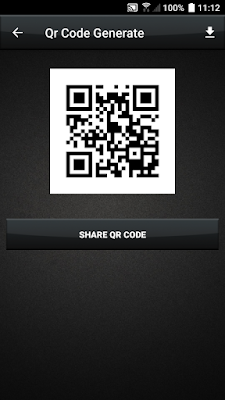There are quite a lot of QR code scanner in the Google Play Store nowadays. Some can also read and interpret QR code from a graphics file saved in the phone. There are also a few even capable to generate new QR code for you.
However, not all of them are free. And, most of the free one are not ad-free.
I have found one that really impress me. It is a 3-in-1 QR code scanner, reader and generator app, very simple to use, and most importantly, it is free for use and ad-free. This means it won't bombard you with any annoying ads!
This Android app is called QR & Barcode Scanner, QR Code Reader, QR Generator offered by Digital Seo Web. You can click here to download and install it from Google Play Store.
By using the phone's camera, it is able to scan and interpret most if not all QR codes and also 2D barcode types including text, website link, product, ISBN, contact, email, calendar, location, Wi-Fi, data matrix, EAN, UPC, Code39, Code128, Codabar, ITF, EAN8 and many other formats.
The app has a trigger for you to turn on your phone's flashlight during scanning environment with low light condition.
Upon successful interpreting of the scanned code, the result will be displayed on the screen, and you will be given options to open the web URL (for website link), save contact information to your phone contacts (for business card QR code), access to WiFi (for WiFi credential QR code), send it out as email, send it out as SMS, share it to other apps, or export it to a CSV file which will contain the date, type and interpreted content of the code.
This app has a very clear-cut menu.
You can read the QR code or barcode saved as PNG, JPG or other graphics file by using the Gallery function.
You can generate your own QR code by using the Generate function.
You can look back at the past scanning/reading results by using the History function.
This app is able to generate quite a number of QR code types, including personal profile, business profile, contact number, SMS message, plain text, email, website URL and company profile.
You can save the generated QR code as a JPG file in your phone by tapping on the "download" icon at the top-right corner. You can also share the generated QR code to other apps.
This app seems to be pretty new in Google Play Store, but it is really amazing. I highly recommend it for all Android phone users who are looking for a free, modest and ad-free QR code scanner, reader and generator.



































